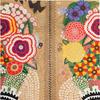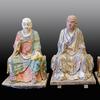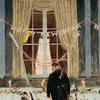Joslyn Art Museum Presents Exhibition Showcasing Boisterous, Heroic, Difficult, and Wild West
- OMAHA, Nebraska
- /
- October 26, 2015
Opening to the public on Sunday, November 15, Joslyn Art Museum presents Go West! Art of the American Frontier from the Buffalo Bill Center of the West, with over 90 artworks and Plains Indian objects in an exhibition spanning 1830 to 1930.
Few aspects of our national history have had a more lasting influence than the exploration and settlement of the western frontier. With the purchase of the Louisiana Territory from France in 1803, American lands doubled in size, and in the years following the Civil War, our efforts and energies turned to the western horizon. Yet by the beginning of the twentieth century, the frontier had closed, and hundreds of thousands of American Indians had been displaced from their ancestral lands as settlers and industry pressed forward to the Pacific Ocean. Go West! Art of the American Frontier considers evolving notions of the American West through more than 90 artworks and artifacts from the collection of the Buffalo Bill Center of the West in Cody, Wyoming. Presenting a story that is boisterous and heroic yet tempered by difficult truths, Go West! reveals an exciting narrative of one of the most important chapters in our history, as seen by our finest artists and artisans.
Go West! opens with works by some of the West’s first artist-explorers, including Alfred Jacob Miller and George Catlin, who traveled extensively among the American Indian tribes of the Great Plains. Meanwhile, depictions of emigrants and family life by William Ranney offered an accessible view of the frontier for eastern audiences, helping to usher in a changing vision of the West from a distant and unfamiliar land to a place that could be seen as home. In the latter half of the nineteenth century, the landscape itself took center stage, its majestic portrayal owing as much to the imagination as to topographic observation. Trained in the European Romantic tradition, Albert Bierstadt and Thomas Moran capitalized on growing public interest in the lands beyond the Missouri River. Although both artists saw development spread throughout the western territories and relied on urban patronage, their paintings were steadfast in presenting a sublime natural world seemingly unaffected by man. The landscapes they portrayed were stirring and spectacular, helping to shape an idealized image of an untouched wilderness that still guides our understanding of the West.
Go West! also features a remarkable selection of objects from the Buffalo Bill Center’s Plains Indian Museum. For Plains Indian peoples, art was integral to life, and every item in daily use was crafted by hand and decorated with fine beadwork, quillwork, stitching, or paint as an expression of personal creativity and cultural traditions. By the 1870s, however, these traditions were challenged as Plains peoples faced the destruction of the great buffalo herds and were forced onto reservations. On view throughout the exhibition are examples from several tribes of the Great Plains, offering an intimate perspective into their cultures and experiences at a time of great social change.
By the turn of the twentieth century, the frontier was quickly fading into the past, and the creation of its myths and legends began in earnest. The Wild West was becoming tame, and the cowboy emerged as a symbol of individuality and strength born of the frontier. Countless depictions of cowboys, American Indians, and other frontier characters in popular journals, helped define America’s heroic image of the West. No artists better captured the spirit of the cowboy than Frederic Remington and Charles M. Russell, whose rough-and-tumble scenes in watercolor, oil, and bronze sculpture captured life on the range. At the same time, artists mourned the passing of traditional American Indian life through images of defeated warriors and idealized tableau of pre-reservation times. American Indian subjects were adopted in the search for a distinctly American vocabulary, evoking regret and longing for a frontier of the past.
Through paintings, sculpture, and Plains Indian objects that span the century between 1830 and 1930, Go West! celebrates the complex history of the West, from the territory’s earliest explorers to the invention of the vigorous legends that still inspire us. While at times wistful or romantic, the struggles and challenges first captured by these artists continue to this day, and are every bit as relevant to the story of the modern West.






_-Closing-the-Distance_100x100_c.jpg)









